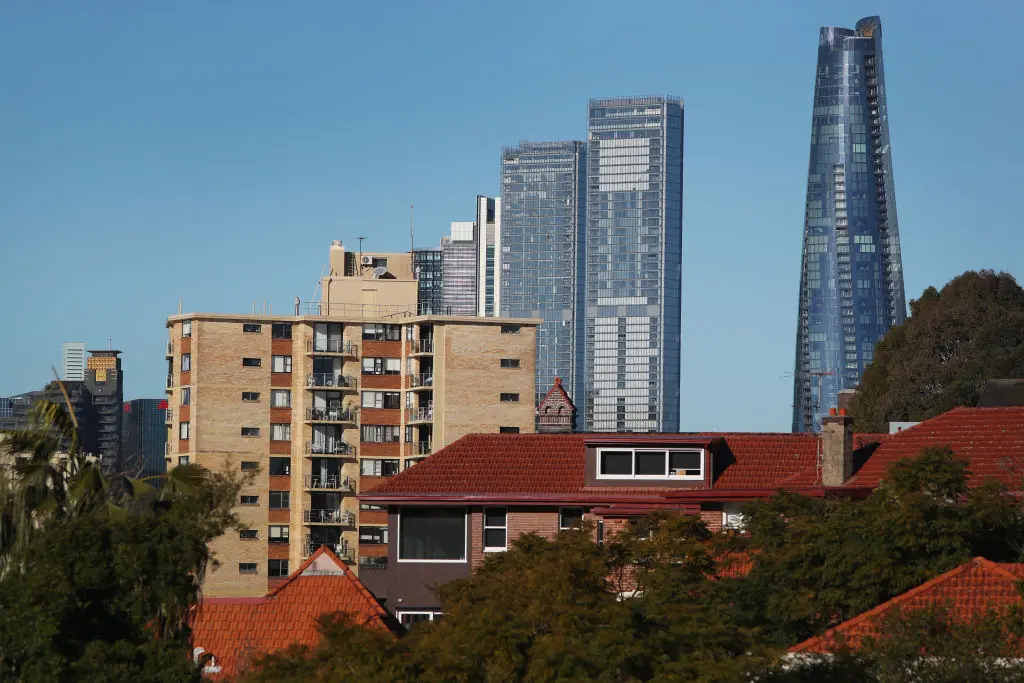Energy Minister Chris Bowen and his opposition counterpart Ted O'Brien locked horns in a fiery debate that set the tone for what could be the most consequential policy contest of the election.
At the National Press Club on April 10, Bowen opened by declaring that the Albanese government’s plan is evidence-based and backed by the CSIRO and energy regulators.
“Our plan, which stays the course with an appropriate mix of more renewable energy, backed by storage, gas, household batteries, and transmission, delivers the cheapest, most reliable form of energy and reduces emissions.”
He highlighted Labor’s progress: “33 percent renewable energy on the day we came to office, 46 percent in the last quarter of last year ... renewables are set to overtake coal as the largest source of our electricity this year.”
Bowen warned that the Coalition’s nuclear-based plan would stall that momentum.
“They see no role for renewables above 54 percent of our electricity by 2050 ... and want to run our coal-fired power system for longer and harder.”
O'Brien Backs Nuclear, More Gas, Public Ownership of Assets
The Liberal Party’s O'Brien hit back with a sharp critique of Labor’s “renewables-only” agenda.“Under the Coalition, Australia will become richer, stronger and fiercely independent. Energy is life, energy is the economy.”

and shadow energy spokesperson Ted O'Brien speaks at the University of Sunshine Coast in Queensland, Australia on Oct. 7, 2021. Peter Wallis/Getty Images for the AOC
Dismissing claims that nuclear is too costly, he also said, “There is no credible commentator in this country suggesting that prices will come down under the Albanese Labor government.”
Positioning the Coalition as pragmatic and grounded in engineering and economics, O’Brien declared, “We need to pour more gas into the market and replace retiring coal plants with zero-emissions nuclear energy.”
O’Brien also said nuclear energy will not just be anchored in private-sector partnerships, but in public ownership.
“We believe the Australian people should own those power plants,” he said, outlining plans for a new government enterprise. “That would mean the benefits flow back to Australians, not just corporations.”
O’Brien argued Australia is already a nuclear nation in medicine and research, and that it’s time to step up: “If we work together with ambition, we can join other advanced economies and get power prices down with a balanced energy mix: renewables, gas, and—as coal exits the system—zero-emissions nuclear energy.”
Who Will Deliver Cheaper Power—And When?
The core of the energy debate sharpened around one pressing question: what’s in it for household budgets?Before the last election, Labor promised households a $275 cut in electricity bills. That promise has haunted the government. This time, Bowen avoided firm numbers.
“The pledge I do give is that energy prices will be cheaper under us than under Mr. O'Brien. That is what we can state categorically,” Bowen said.
He deflected calls for a concrete dollar figure, citing global volatility: “Anybody who predicts energy prices in this geopolitical environment is making a punt.”
He instead insisted that the Coalition’s nuclear policy is the most expensive form of energy—and their reliance on ageing coal plants would not help.
Pressed again on specifics, he referenced regulator estimates: “You’ve seen Australian Energy Market Corporation reports showing a 13 percent reduction over 10 years if we keep going with the current plan. That’s not an election pledge—but that is the expert view.”
In response, O’Brien countered with hard numbers.
“Frontier Economics shows 15 percent lower gas prices for industry, 7 percent for households, and 8 percent for wholesale electricity—flowing through to 3 percent cheaper bills.”
However he was challenged on the Coalition’s claim that nuclear would deliver power 44 percent cheaper energy than Labor’s plan.
He argued that the figure reflects system-wide savings from not overbuilding the grid.
Even when comparing like-for-like energy output, he said, “nuclear was 25 percent cheaper.”
Bowen hit back, accusing the Coalition of cherry-picking and ignoring the CSIRO’s costings.
2030 Targets: Stick or Shift?
The sharpest divide came over Australia’s 2030 emissions and renewable targets.Bowen defended Labor’s 43 percent emissions reduction goal—even though its modelling is from 2021.
“We’re on track—42 percent according to the last figures,” he said. “That’s a great national achievement.”
Despite volatility, Bowen insisted the policy mix is working, “We believe the best way to future-proof the Australian economy is to lead the world in decarbonising.”
O’Brien was blunt, “Labor will often say how important their policies are while knowing Australians are hurting ... They probably believe they’re saving the planet.”
He claimed emissions have flatlined since Labor took office, and promised to scrap the 43 percent target.
“We want to ensure that we are growing this country. Decarbonising it is good, de-industrialising it like Labor is, is bad.”
He also stopped short of recommitting to Australia’s Paris target, saying, “We’re actually going to do the analysis.”The Gas Plan: Policy or Placeholder?
If power prices are the political lightning rod, gas is the slow-burning fuse.Asked whether Australia faces a short-term gas shortage, Bowen didn’t hesitate. “We have an issue with domestic gas supply. Yes.”
But he quickly pivoted to rip into the Coalition’s gas plan.
“You mentioned opposition modelling, which I think is generous. I’ve seen more detailed menus in a Chinese restaurant,” Bowen said, holding up their document. “Clearly, policy on the run.”
O’Brien insisted the Coalition’s plan would confront domestic shortfalls head-on.
Final Word: Two Roads Diverge
As the debate closed, each minister made their final pitch.Bowen cited a dramatic drop in wholesale prices since the Coalition left office—electricity from $317 to $88/MWh, gas from $34 to $14/GJ.
He said the government had secured 650 petajoules of domestic gas—compared to 50 PJ promised by the Coalition—and added the equivalent of “more than three Snowy Hydro schemes” to the grid.
“When the Coalition was in power, 24 coal plants announced closure. They failed to plan for it,” Bowen said. “We need to listen to the experts.”
O’Brien closed with a broader critique.
“When Peter Dutton says he wants to get Australia back on track, he’s talking about the economy ... because that’s how we help families, fund services, and support businesses.”
He insisted that there is a reason why countries all around the world are now introducing nuclear energy.
“It’s in Australia’s interest, and therefore we have no intention of changing our view on that. We always have to focus on what is right for Australia.”
And with that, the debate ended—two different energy futures laid bare.







